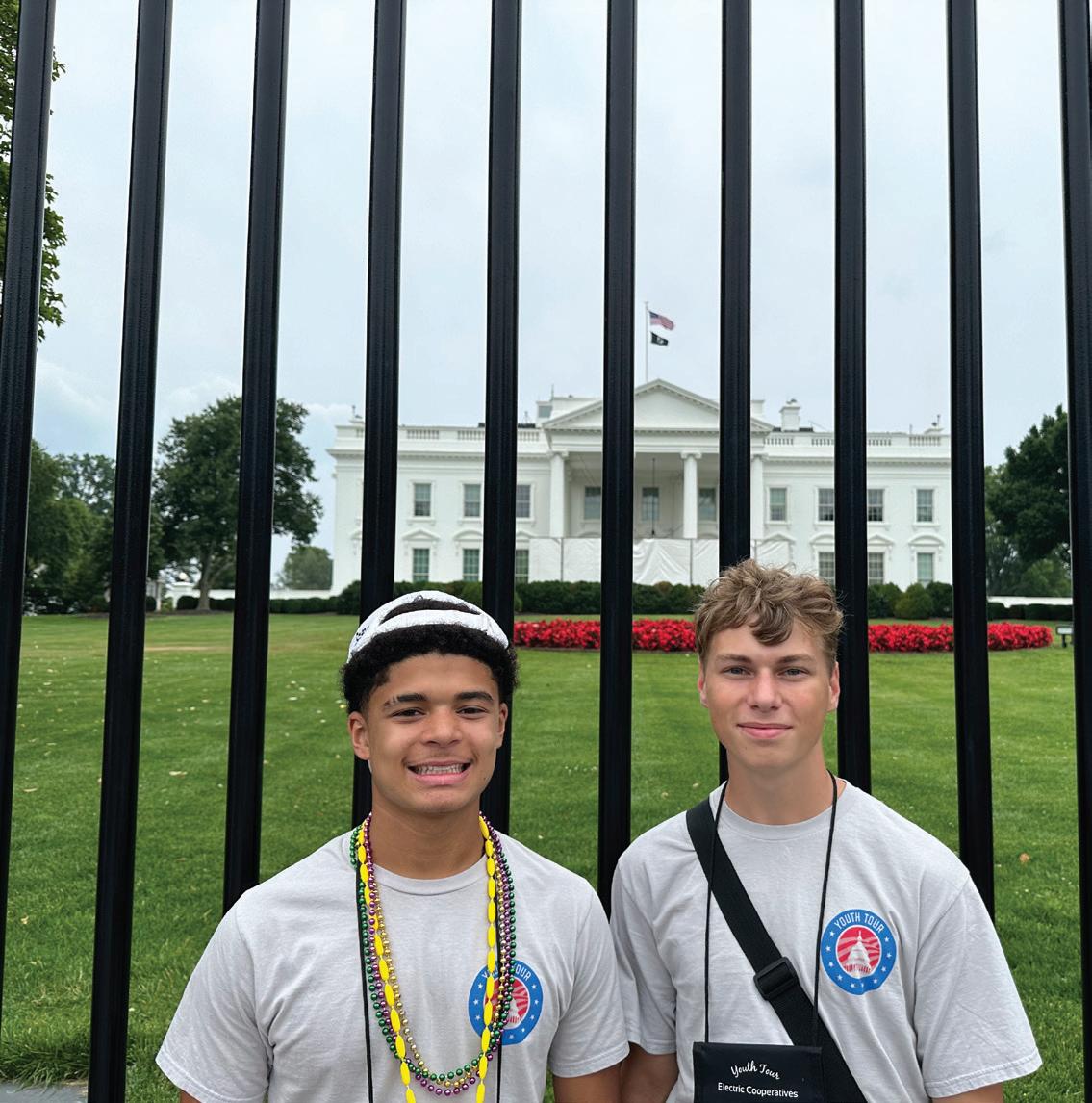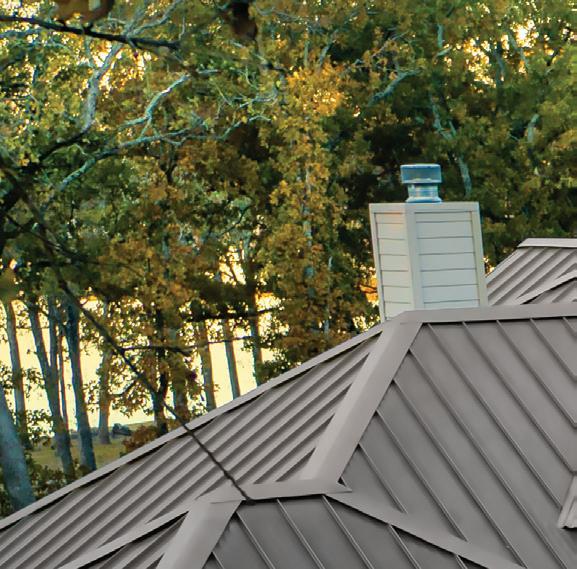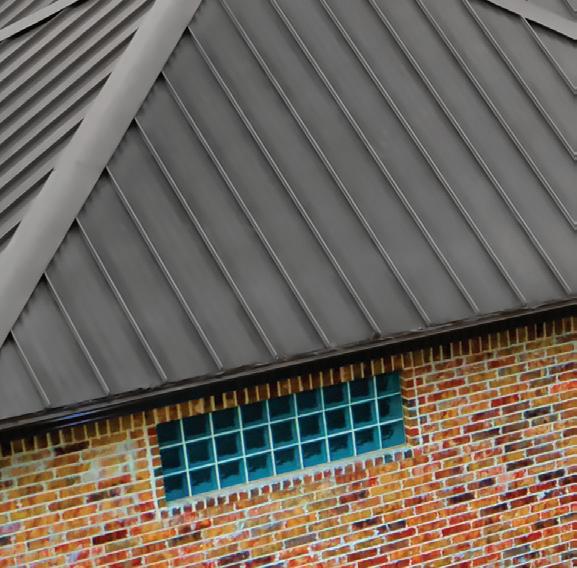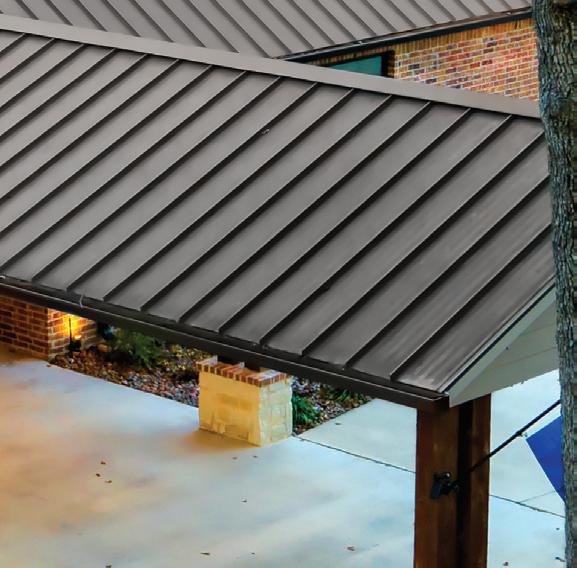





































From the rich maritime heritage of whaling towns to quaint island villages and grand seaside mansions of the Gilded Age, our small, comfortable ships can take you to the heart of New England’s most treasured destinations. Be welcomed back to your home away from home, where you can delight in the warm camaraderie of fellow guests and crew.








































Before writing this column, I took some time to reflect on what I said in my column this time last year. One thing is for sure: Our industry is constantly changing.
Last year, I talked about how far we have come and the changes we have seen in our 87-year history. We certainly don’t provide power the same way we did all those years ago. However, one thing has not changed: We have always been committed to and will continue to be committed to providing safe, reliable, affordable electricity.
Your Louisiana electric cooperatives continue to adopt new and improved methods to obtain power supply, including renewable energy. Systems have become more automated. Mother Nature has taught us we must build back stronger and more resilient. Technology plays a more significant role in delivering electricity to you, the consumer-member, and how our employees manage their daily tasks.
Last year, our Youth Leadership Council Representative Jacob Mullican was asked, “What do you think about when you flick on the power switch?” His response was probably the same as you would give if asked the same question, “I don’t think; I just expect.” He was right. You expect the lights to come on when you flick the switch. You set high expectations for your
electric cooperative’s directors, management and employees every minute of every day, and with exceptions to bad weather or mechanical failures, we deliver on those expectations.

But your electric cooperative delivers so much more than just reliable power. We constantly work to keep electricity affordable and safe. We focus on creative solutions to ensure reliability and resiliency. In addition, your electric cooperatives give back by supporting educational opportunities for our youth through Youth Tour, mini-grants and 4-H, to name a few. They support and volunteer at charitable and community events. Your electric cooperative hires local men and women from your communities. They provide employees with educational opportunities. We live and work in your communities. We know what it means to power lives.
We know you have high expectations for us, and you should. But we also want you to know that safety for our employees and community is always our priority. We have a genuine concern for our community. It’s
CEO Addie Armato
DIRECTOR OF LOSS CONTROL Aarron Graham
SAFETY COORDINATOR Ricky Melancon
COMMUNICATIONS AND DIGITAL MARKETING
SPECIALIST Conley Bourgeois
ADMINISTRATIVE ASSISTANT Rhianna Garon
CREDIT UNION
Robin Plunket, manager
Jody Overhultz, representative
Board of
President Dennis Glass
Vice President Michael Heinen
Secretary/Treasurer Roger Dale DeHart


BEAUREGARD ELECTRIC COOPERATIVE INC.
J.R. Hickman Trent Buxton
CLAIBORNE ELECTRIC COOPERATIVE INC.
Mark Brown Lane Davidson
DEMCO
Daniel Berthelot Richard “Dickie” Sitman
JEFF DAVIS ELECTRIC COOPERATIVE INC.
Michael Heinen Byron Hardee
SOUTH LOUISIANA ELECTRIC COOP ASSOCIATION
Trevor Benoit Roger Dale DeHart
WASHINGTONST. TAMMANY ELECTRIC COOP INC.
Joe Jarrell Dennis Glass
Associate Member
PANOLAHARRISON ELECTRIC COOPERATIVE INC.

one of our operating principles.
Although I am not a futurist, I can confidently say this new year will bring numerous opportunities and challenges for our electric cooperatives. Whatever 2024 brings, our electric cooperatives will always put you, the member-consumer, first as they work daily to meet and, I hope, exceed your expectations.
From all of us at your Louisiana electric cooperatives, we wish you a happy, healthy and prosperous new year.


Broussard and Louisiana’s musical melting pot Page 12

SOUTH LOUISIANA ELECTRIC COOPERATIVE ASSOCIATION
P.O. Box 4037, Houma, LA 70361
2028 Coteau Road, Hwy. 660, Houma, LA 70364
985-876-6880
Amelia branch office: 2903 Lake Palourde Road Morgan City, LA 70380 985-631-3605 www.sleca.com
STAFF
Matthew Peters | General Manager
Brett Ledet | Assistant General Manager and Manager of Engineering
Marc Caldwell | District Manager
Shannon Soudelier | Operations Superintendent
Sandi Click | Manager of Finance
Jordy Bourg | Manager of Purchasing
Melissa Bonvillain | Manager of Member Services
BOARD OF DIRECTORS
David Luke | President | 985-855-4106
Roger Dale DeHart | Vice President | 985-860-1078
Larry Daigle | Secretary | 985-870-1121
Terry Trahan | Treasurer | 985-804-7335
Ivan Acosta | 985-397-3341
Trevor Benoit | 985-498-0602
Sandra Boudreaux | 985-464-0064
Abby Rivet LeBlanc | 985-665-6974
Betty Jean Doyle | 985-709-4396
Lloyd Gibson | Board Adviser | 985-209-3765
Volume 41, Issue 1
Louisiana Country (USPS 473-180) is published bimonthly by the Association of Louisiana Electric Co-ops Inc., 10725 Airline Hwy., Baton Rouge, LA 70816, in partnership with Pioneer Utility Resources.
Annual subscriptions: Members $2.30. Nonmembers $5.
Postmaster: Send form 3579 to 10725 Airline Hwy., Baton Rouge, LA 70816.
Periodicals postage paid at Baton Rouge, Louisiana 70821, and additional mailing offices.
South Louisiana Electric Cooperative Association wishes you and your family a happy new year full of health and prosperity. My prayer for our SLECA members, employees and board of directors is that you find this new year to be all that you wish for it to be.
Resolutions are at the heart of any new year, and those resolutions change from year to year depending on what the previous year looked like and what we want to transpire in the coming year.

The most common resolutions are to stop bad habits, work on personal health goals, save money, travel more and the list goes on. Many of us struggle to keep the momentum throughout the year, but I believe that regardless of how well we carry out these resolutions, it’s always a good idea to strive for better for ourselves and others.
At SLECA, we don’t necessarily make resolutions, but we like to make goals and plan to make those goals come to fruition. These may be safety targets for our employees, financial objectives for our co-op, infrastructure goals, etc. One of the resolutions I have for SLECA— with support from your board of directors—is for continued engagement in the community we serve.
While keeping the lights on is always our main goal, SLECA began many years ago as a community necessity and we want to make sure we are engaged in the community and serving where we can.
Throughout the year, SLECA engages the community in the following ways:
• Touch a truck events
• College scholarship programs
• SLECA Youth Tour
• Serving at local senior center luncheons
• Supporting the local Upside Downs program
• Community trick-or-treat events
• Sponsoring local recreation youth teams
• Sponsoring local adult kickball teams
• Sponsoring local schools
• Electric safety demonstrations at local schools/events
• The Houma Christmas parade
These are events we have been part of throughout the years and things we have started recently, but they are certainly not the only activities we can partake in.
SLECA employees truly enjoy their time in the community, representing the co-op and engaging the community, and we look forward to not only continuing the things we have done, but learning of more opportunities. 212706001
SLECA is not just a co-op located in the community. It is a part of this community. We live here, shop here and want to be integrated into this community.
We look forward to serving the community in the new year and many years to come!
Did you know SLECA gives away cash just for reading Louisiana Country In each issue, four account numbers are randomly selected using a computer program and hidden in articles on SLECA’s pages (4, 5, 8, 17, 20 and 21).
If you see your account number, call SLECA and win $25 cash or have the money applied to your bill. If you are not reading Louisiana Country from cover to cover, you’re missing out on great articles and the chance to win money.




SLECA offices are closed: January 1 in observance of New Year’s; January 15 in observance of Martin Luther King Jr. Day; and February 13 in observance of Mardi Gras.

Cleco Cajun LLC

Proud to serve Beauregard, Claiborne, Concordia, Jefferson Davis, Northeast, Pointe Coupee, SLECA, SLEMCO and Washington-St. Tammany electric cooperatives.

Louisiana Electric Cooperative general managers and board members attended the National Rural Electric Cooperative Association’s Regional Meetings 8 and 10 in New Orleans October 18-20. From left are Danny Berthelot, DEMCO; Addie Armato, Association of Louisiana Electric Cooperatives; Roger Dale DeHart, South Louisiana Electric Cooperative Association; Austin Haynes, Panola-Harrison Electric Cooperative; Anya Killmer, Jeff Davis Electric Cooperative; Trevor Benoit, SLECA; Jill McGraw, Kevin Beauchamp and Leslie Falks, DEMCO; Matt Peters, SLECA; Dane Hocott, Washington-St. Tammany Electric Cooperative; Mike Heinen, JDEC; and Eric Gautreaux, JDEC.




Practicing Techniques Used in the Field
Training to improve skills and stress the importance of working safely is an ongoing task for the line crews at all electric cooperatives. Live line and bucket truck training sessions, hosted by the Association of Louisiana Electric Cooperatives, were recently held at DEMCO headquarters in Greenwell Springs.



FAR LEFT: Mike Heinen, Jeff Davis Electric Cooperative general manager and National Rural UtilitiesCooperative Finance Corporation board member, speaks at the recent CFC Independent Borrowers Executive Summit in Savannah, Georgia.
Stephensville native Eroy Acosta was elected to the SLECA Board of directors in 1987 and served his community as a restaurant and lounge owner for many years.
Eroy was a board member of the combined St. Martin Parish Sewage District Board and St. Martin Parish Water District Board. The Stephensville Volunteer Fire Department was established through his fundraising efforts, and he served 21 years as department president.
Eroy served District 8, which includes Stephensville, Bayou L’Ourse, Deadwood, and parts of Gibson, Morgan City and Greenwood. He also represented SLECA on the Association of Louisiana Electric
Coooperatives Board of Directors.
He enjoyed serving the community at the state and local levels.
“He was a true testament of leadership for the SLECA board of directors,” SLECA Board President David Luke says.
SLECA General Manager Matt Peters tells of what Eroy meant to the community.
“Mr. Eroy was a dear friend and someone with an amazing history of his area and SLECA,” Matt says. “He once told me how he remembered when SLECA first started to put power in Stephensville as a young boy and how he watched the lines being built to serve the area.
“When people talk about Stephensville,

his name is always in the conversation. He was a true community leader, and his name will never be forgotten.”
Eroy’s family, friends and community will truly miss him. His SLECA family sends their thoughts and prayers to the entire Acosta family.
Two South Louisiana Electric Cooperative Association students have the opportunity to win the 2024 SLECA Youth Tour Contest. The prize is a week in June with about two dozen other students from Louisiana on a “Government in Action” Youth Tour of Washington, D.C.
Eligibility Requirements
• High school sophomores and juniors are eligible.
• Electricity to student’s residence or parent’s business must be provided by SLECA.
Youth Tour Contest Guidelines
• Students must write a roughly 500word letter to an elected official. The entry must be submitted in the proper letter format to be eligible.
• Students should voice their opinions
Entries should be mailed to Youth Tour Essay Contest, c/o SLECA, P.O. Box 4037, Houma, LA 70361; delivered to SLECA’s main office at 2028 Coteau Road, Highway 660, Houma, LA 70364, or SLECA’s branch office in Amelia, 2903 Lake Palourde Road, Morgan City, LA 70380; or mailed to P.O. Box 1126, Amelia, LA 70340.

ENTRIES MUST BE POSTMARKED NO LATER THAN March 8, 2024. For more information, contact SLECA at 985-876-6880 or 1-800-256-8826.
(positive or negative) to the local, state or federal official on any issue or topic they believe to be critical to South Louisiana.
• The topic should be stated and thoroughly discussed, and the letter should be addressed to the official the student has selected.
• On a separate sheet, the student must write their name, Social Security number, name of school, grade level, parents’ names, address and phone number.
• Entries must include a current photo for use in news releases after the contest.












Many Louisiana sportsmen start hunting by pursuing squirrels at the side of their father, other relative or a family friend, but the tree-climbers can provide exciting sport for hunters of all ages.
To bag squirrels, hunters must spot them. The ghosts of the forest can instantly vanish when danger approaches. Masters of concealment, squirrels find countless places to disappear among the branches and foliage of big trees. Fox squirrels prefer to hide, but gray squirrels typically run as danger approaches.
In good squirrel habitat, walk through the forest slowly. Cover ground more thoroughly rather than cover more ground. Without making quick movements, advance a few steps. Then, stop to look and listen. Scan the trees for shaking branches, odd movements or anything that seems out of place, such as an oddly
shaped “knot” on a tree trunk or lumps on branches.
Smart hunters use their ears as much or more than their eyes to locate bushytails. Squirrels can be heard long before they can be seen. Listen for the distinctive sound of claws scratching on rough bark, shaking branches or objects dropping to the ground. Listen for barking squirrels proclaiming their territory, which usually happens a little later in the morning or late afternoon.
Periodically, find a stump, fallen log or a comfortable tree trunk and sit down for a while. Some people carry light, camouflaged folding chairs so they can sit anywhere. Remain as still and quiet as possible while scanning the trees. A good pair of binoculars helps detect wellconcealed bushytails.
If you spot a squirrel just out of range,
watch it. Determine where it might want to go. Sometimes, a squirrel foraging for food might wander into the gun range of an undetected hunter. If the squirrel doesn’t get closer, plan a good stalking route that takes advantage of any available concealment.
Hunting squirrels in pairs or teams can put more weight in a gamebag. Alerted bushytails habitually put tree trunks, large branches or other cover between themselves and hunters. Take advantage of a squirrel’s innate curiosity. One person can walk around the tree, making noise to grab the squirrel’s attention, while another remains still and silent.
Keying on that moving person, the squirrel might shift its position. That could give someone else a shot at it. When hunting alone, toss a limb, pinecone or another object to the other side of the tree. That might make a squirrel jump and reveal its position.
Bushytails love to gnaw on green pinecones. They tear apart the cone chips




to reach succulent seeds. Cones from various pine species ripen at different times. In addition, cones can stay edible much longer than acorns or other mast and can provide squirrels food for weeks.
“Squirrels seldom go into longleaf pines, but they frequently go into loblolly pines because they have more limbs all the way up the tree,” says Chester Thompson, a champion squirrel dog breeder and hunter from DeRidder. “In late season, many trees will still have cones. As the season goes on, squirrels move to different types of trees to feed upon whatever ripens at that time.”
A monoculture pine forest normally doesn’t offer enough nutrition throughout the year to hold many squirrels, but a mixed pine and hardwood forest provides abundant and varied food sources. At times, a single pine tree growing in an oak grove could attract squirrels like children to a candy store.
“Squirrels are usually in forests with mixed pines and hardwoods,” Chester says. “I like to hunt the edges where a pine forest transitions to a hardwood bottom. Squirrels go back and forth from the pines to the hardwoods.”
When feeding on cones, squirrels leave mounds of discarded husks, chips and other debris piled up around tree trunks. Look for green or freshly gnawed cone husks still sticky with sap to confirm recent
squirrel activity. After locating a good tree, find a comfortable spot to sit and wait. Listen for falling chips that sound like light rain hitting the forest floor
Sneaking up on squirrels in thick underbrush, palmettos and sucking mud seems almost impossible. However, in a place with an abundance of water like Louisiana, a small human-powered craft like a pirogue, canoe or kayak glides along silently. Along a promising shoreline, ease the paddle into the water and move forward slowly. Watch for movement. Periodically, stop to listen for activity. Use any available cover, and hug the inside shorelines on curves to keep the boat as hidden as possible.
Sportsmen can hunt solo by positioning a gun in a convenient, safe place when paddling, but many boaters prefer to work in teams. Designate one shooter who sits in the bow, ready for action, with the gun pointing in a safe direction. The other person controls the boat and helps spot game. After locating a squirrel, the paddler positions the craft so the shooter can make a safe shot.
Hunting from a boat is a good way for children to participate without slogging through soft mud or impenetrable thickets where walking isn’t easy. Children quickly grow bored sitting on cold ground and rarely remain still or quiet. In a boat,
at least the scenery constantly changes. Boaters can carry additional supplies, snacks and refreshments to take occasional breaks.
When hunting squirrels from boats, sportsmen might see other game, such as feral hogs. Hunters may spot an occasional rabbit on patches of slightly higher ground. During waterfowl season, hunters with the proper licenses, weapons and ammunition could jump wood ducks or other legal birds while quietly paddling along any Louisiana bayou.
It’s also possible to fish while looking for squirrels. Bushytails routinely see anglers in boats and largely ignore them
The Louisiana squirrel season runs through February 29, 2024, with a limit of eight per day. Season dates and regulations on some public lands might differ from the statewide dates and laws, so always check the regulations before hunting.

Born in New Orleans, John N. Felsher grew up in Slidell and attended the University of Southwestern Louisiana, now the University of LouisianaLafayette. He worked as the outdoors editor for four Louisiana newspapers and served in the Air Force. An avid sportsman, Felsher now works as a full-time professional freelance writer, broadcaster and photographer. Contact him at j.felsher@hotmail.com or through Facebook.



By Drew Woolley
Marc Broussard was 5 years old when his father first realized the boy could sing. By that time, Ted Broussard, famed Boogie Kings guitarist, had given up on fostering a love for music in Marc’s two older brothers, and he eagerly set out to teach his youngest son to play.
Marc remembers the first four songs his father taught him were an eclectic mix: “The Greatest Love of All,” originally recorded by George Benson but popularized by Whitney Houston, Chuck Berry’s “Johnny B. Goode,” The Beatles’ “Maxwell’s Silver Hammer” and Sammy Davis Jr.’s “The Candy Man.”
Armed with those standards, Marc ventured into the bustling Lafayette music scene where vocalists like G.G. Shine, Jerry LaCroix, Tommy McLain and Duane Yates captured his imagination. Marc was more than happy to tag along or haul equipment as long as he could be around the music.


“Any time it was an all-ages show, or my dad might be playing a high school reunion or something, I’d go help carry amps and guitars,” Marc says. “I’d get up and sing one or two songs at the most. That was a real treat for me. But it also gave me a little inside baseball as to what that life looked like. And frankly, I was enamored. I wanted everything to do with it. It seemed like the best gig in the world.”
That diverse musical background was a fitting entry point to Louisiana
music, which has always drawn on a vibrant mix of cultural traditions. Mike Shepherd, founder and chief executive of the Louisiana Music Hall of Fame, traces those origins back to the 1600s and one spot where everyone gathered.



“A place called Congo Square in New Orleans was really where the melting pot came together,” he says. “There were slaves from Africa, the Caribbean and the Canary Islands, but we also had French and Spanish influences. Europeans brought violins, accordions and horns. The African people tended to bring more percussion instruments. To say it simply, music is who we are. Always has been.”


While New Orleans jazz and blues have defined Louisiana music and influenced artists all over the world, it’s only one part of the rich musical history of the Bayou State. Marc himself identifies more with the blue-eyed soul movement of the ’60s and ’70s, with influences from the swamp pop that grew out of Southern Louisiana.
“For someone like me who, as a young man, was really into guys like Brian McKnight, Boyz II Men and Michael Bolton, these really freak singers, to all of a sudden hear a Lil’ Band of Gold record


























































































































































































































































































































































where Warren Storm is singing like a freak of nature and then to hear him do ‘Mathilda’ at Jazz Fest. It was like going to church, man,” Marc says. “All of a sudden, the thing got real.”
Despite his musical heritage, Marc never thought his songs could take him to a career with a major label. At best, he expected to join his father and the host of other musicians he had grown up around who played as a side gig to supplement their income. Then his debut album “Carencro,” named for his hometown, hit it big in 2004.
“I recognized that Michael Jackson wasn’t the same thing as the Cajun and zydeco boys,” Marc says. “But I also never associated myself with the Michael Jacksons of the world. I definitely always saw myself as part of this place. So, I was really surprised when I started opening for groups like Maroon 5.”
It wasn’t until later in his career, when he got to know Cajun-punk fiddler Louis



Today, Marc tries to channel that same passion and energy into his own music. At live performances, his goal is less
















Michot and Zyde-Cajun artists like Wayne Toups and Roddy Romero, that Marc started to gain a new appreciation for Louisiana music rooted in a different style than the blues, soul and pop he was raised on.
“Essentially, my whole young life was defined by snobbery with regard to singing,” he says. “The more technical a singer, the better I thought they were. And that’s just no longer the case. Louis Michot is not a technical vocalist, but he’s one of my favorite singers of all time because the passion—the force—he puts into some of these vocals is unrivaled. It’s a visceral thing when you see it.”






































to show off his technical prowess as a vocalist and more to make sure everyone is having a good time.
“I just like having a party,” Marc says. "You see a show like Trombone Shorty or Big Sam or Prince, and it’s like, ‘That’s the way to do it!’ That's the phase I’m in these days, and who knows if I’ll live there forever. Maybe one of these days, I’ll start trying to make people cry all night, every night.”

Marc hopes he’s changed as much as a person since “Carencro” was first released as he has as a musician. But he’s excited to revisit those early days of his career with an anniversary show of his breakout album this year.

Marc also recently released a new












































































































Meeting Louisiana legends like Wayne Toups gave Marc a deeper appreciation for local sounds. Wayne has played the accordion since he was 13, mixing Cajun and zydeco styles into what he calls “ZyDecajun.” Dubbed “Le Boss” and “The Cajun Springsteen,” Wayne is a Grammy winner and a member of the Louisiana Music Hall of Fame. PHOTOS COURTESY OF WAYNE TOUPS
blues cover record, “S.O.S. 4: Blues for Your Soul,” with a portion of the proceeds benefiting the Guitars Over Guns youth rehabilitation program.
No matter where his career has taken him, he has never lost the connection to his hometown, where he still lives with his wife and children.
“This need to be who I am has always been intrinsically tied to this place,” Marc says. “It was never a thought that I had to move away from that. I was inextricably tied to the bayou.”
He’s far from the only musician who felt the pull of Louisiana’s rich musical history. Mike has inducted several artists into the Louisiana Music Hall of Fame who may not have been from the state but felt that same tug at formative moments in their careers.
No music is more synonymous with Louisiana than New Orleans jazz. Born in the early 1910s from a combination of Baton Rouge blues, brass band marches and a spirit of improvisation, jazz draws on influences from all over the state’s cultural melting pot. While the genre isn’t unique to Louisiana, the New Orleans variety will always be the real thing for Mike Shepherd, founder of the Louisiana Music Hall of Fame. “It can tend to be more raw and not fall within the lines necessarily,” he says. “Jazz players have a lot of lines they hold to. But in New Orleans jazz not so much.”
Driven by lively rhythms, accordion melodies and a mix of English and Creole-French lyrics, zydeco has its roots in the state’s rural communities. While it originated in the house parties and small social gatherings of Louisiana’s African American communities, zydeco was popularized by Clifton Chenier. He mixed it with elements of blues and R&B, earning him the title King of Zydeco.

Many found their way to Shreveport for the famous “Louisiana Hayride,” a music radio show from KWKH that was broadcast nationwide and was second only to the “Grand Ole Opry” broadcast for much of its run in the ’40s and ’50s. The show helped launch the career of a young Elvis Presley and offered a home to Hank Williams after his rejection from the Opry, giving Mike plenty of reason to enshrine them in the Hall of Fame. In 2024, he hopes to add Ray Charles and Dolly Parton, who also started their careers at “Hayride.”
“It’s just amazing the people who come to Louisiana and seek it out because it’s got the music,” Mike says. “It’s got all the music in the world.”
























Popular in South Louisiana and Southeast Texas, swamp pop saw Cajun and Creole musicians shift away from French traditions toward the rock ’n’ roll sounds that were becoming popular in the 1950s. Typified by slow ballads with emotional lyrics over honky-tonk piano and a rhythm and blues backbeat, several swamp pop hits made the national charts throughout the decade. But many more are regarded as classics in the region they call home.




























If swamp pop was a rebellion, Cajun music is what it was rebelling against. Like zydeco, Cajun music is upbeat and relies primarily on accordion, fiddle and vocals featuring “Cajun talk,” as Mike refers to the lyrics. “They weave it into the songs, and they weave in cinstruments,” he says. “It was the stuff French people in south Louisiana played with. They couldn’t go out and buy expensive instruments. Most Cajun musicians have their stuff made by another Cajun because you have to know the music to know the instruments.”












































































October 2, 2023
Present were directors David Luke, president; Roger DeHart, vice president; Larry Daigle, secretary; Terry Trahan, treasurer; board members Trevor Benoit, Abby LeBlanc, Betty Jean Doyle, Sandra Boudreaux; and Lloyd Gibson, adviser to the board.
Also attending were Dan Jewell; Brad Middendorf; Noman Williams with GridLiance; General Manager Matt Peters; and Elaine Robertson, secretary to the board.
The board approved the minutes and summary of the September 11, 2023, regular board meeting.
The board approved the ALEC report.
The financial report, approved by the board, highlighted interest earnings, cash on hand, a rate comparison showing South Louisiana Electric Cooperative Association having the most steady rates in the area, line loss, kilowatt-hour sales for the month, cumulative sales to date, cost of service, equity, times interest earned ratio, and electric and total revenue versus cost per kilowatt-hour.
Following an update on schools, meetings and events, Peters reported on the following:
• The board Christmas dinner will be December 1 at Melvin’s.
• SLECA updated the board on 1803.
• SLECA received two checks from Federal Emergency Management Agency for Hurricane Ida in the amount of $1,118,906.53 that will be applied to the principal on the emergency line of credit.
• SLECA received a check from FEMA for Hurricane Rita in the amount of $336,248.09.
• SLECA received a check in the amount of $5,591.29 from Arkansas Electric Cooperatives Inc. for SLECA’s 2022 patronage capital allocation.
• SLECA received a check from CFC in the amount of $292,956.97 for SLECA’s patronage capital and retirement.
• Hurricane Ida update shows $145,800,000 has been drawn from CFC on the emergency line of credit as of September 18 for repairs. 102905002
The board approved the manager’s report, attorney’s fees and the safety report showing employees have worked 4,453,040 hours without a lost-time accident since December 1996.
The board approved the renewal of SLECA’s medical insurance with AmWINS for SLECA’s retired employees and directors, as well as the purchase of women’s uniforms.
The meeting was then adjourned
For copies of the minutes, contact SLECA, P.O. Box 4037, Houma, LA 70361, or call 985-876-6880 or 800-256-8826.
Four scholarships of $1,000 each are made available through SLECA to help graduating high school seniors with the cost of tuition, room, board, or books for the 2024-25 fall and spring semesters.
Scholarships may be used at any Louisiana university, college, community college or technical school.
Students must live on SLECA lines or have a parent who is a manager or owner of a company that is a SLECA member. Financial need and scholastic performance are considered. 214044001
For more information, see your guidance counselor or call SLECA at 985-876-6880 in Houma, or 631-3605 in Amelia. The deadline to apply is March 29. n
GETTY STOCK IMAGE BY NIRAT



















































































By David Herder








We can all think of improvements we would like to make in the new year, whether it is eating healthier, volunteering more or lowering our expenses. One way to spend less in the new year and for many more to come is to make household energy efficiency a goal.
Making small changes to your routine can add up to significant savings. But do you know what adds up faster than small things? Big things.
If you’re willing to make the initial investment, resolve to go big by taking on one of these projects.
For most houses, heating and cooling air makes up the largest chunk of energy use. If you’re paying to heat or cool the air, you want to keep it inside your house.
Common spots to insulate are attics, walls, floors and anywhere your house contacts the outside. Just like you want a jacket between you and a snowstorm, you want insulation between your home and the outdoors.
Insulation is rated in R-values. Suggested insulation R-values are between R-30 and R-60, depending on your region and climate. In many cases, it is a good idea to get professional insulation help.
Air sealing is another step to prevent drafts by physically closing gaps and cracks. In some cases, this can be as simple as adding caulking or weatherstripping to places where you notice drafts. Contractors and some utilities can do a home blower test to find and seal leaks.
If you’re considering doing some air sealing on your own, the Department of Energy offers tips at www.energy.gov/energysaver/air-sealing-your-home.
What are windows but walls you can see through? Like outer walls, they touch the outdoors, and unlike many walls, they aren’t filled with thick insulation. Heat gain and loss through windows account for 25% to 30% of residential heating and cooling costs, according to the Department of Energy.


































































































Energy Star windows typically have high U-factors, a measurement of how well they insulate. Get multiple quotes for any home improvement project, including windows, and be on the lookout for rebates from utilities, state programs and the federal government.



















If you aren’t buying new windows right away, consider steppingstones such as adding weatherstripping, caulking gaps and using thermal drapes.
























Just like you don’t want your heated and cooled air to leak outdoors, you don’t want your air leaking into parts of the house where you never go.

If you have ductwork in an attic, crawlspace or other unairconditioned or heated area, the ducts could have leaks that increase your energy bill. According to the Department of Energy, 20% to 30% of the air moved through ducts is lost to leakage.

Hire a professional to seal your ducts, or seal them yourself with metal tape or duct mastic specifically designed for the job. Do not use duct tape, which will dry out and lose adhesion.
So far, we’ve covered three ways to keep your heated and cooled air where you want it. It turns out, how you heat or cool the air is also important.
If you’re willing to replace your furnace, or the unit is 10-plus years old, a heat pump is an efficient home heating and cooling upgrade. It can reduce heating costs by as much as 50% compared to electric resistance heating, according to the Department of Energy.
A heat pump works similarly to an air conditioner in reverse. It uses a refrigerant to pull heat energy out of the air outdoors, then moves it indoors and blows the heat into your living areas.
Also consider a heat pump water heater, which has all the same advantages but heats water rather than air.
Programmable Thermostat
If a heater turns on, but nobody is there to hear it, does it make a noise? One thing we know is that it would impact your energy bill.















































































































Before starting a project, it is important to take a step back and consider, “What will make the biggest impact?” This means knowing how efficient your house is and where the energy use is going.


A home energy assessment looks for air leaks, insufficient insulation, energy-hog appliances or other issues, and evaluates your total energy use. Conducting a home energy assessment lets you know where any inefficiencies in your house are, giving you a blueprint for fixing them.
Many utilities offer assessment programs, and the Department of Energy offers guides on assessments— including tips for a do-it-yourself assessment—at www.energy.gov/energysaver/home-energy-assessments.
Both programmable and smart thermostats help people save energy by changing the temperature throughout the day. You can save 10% on energy bills by turning back the thermostat 10% to 15% for eight hours a day, according to the Department of Energy.
Whether that means heating or cooling less during the day while you’re at work or turning things down while you’re sleeping, a programmable thermostat ensures you’re only heating and cooling the air you feel.


(A). The persons named as directors in the articles of conversion shall compose the Board of Directors until the next meeting or until their successors shall have been elected and shall have qualified. These bylaws acknowledge and affirm the action of the Board of Directors that directors from District 1, 2 and 3 are serving three year terms beginning in the year 1980; that the directors from District 7, 8 and 9 are serving three year terms beginning in the year 1981; and the directors from Districts 4, 5 and 6 will be elected for three year terms in the year 1982. At the annual meeting in 1983, the directors from Districts 1, 2 and 3 will be elected to serve for a period of three years. Thereafter, a director whose term shall expire as above provided shall be elected at the respective district meeting to serve for a period of three years or until their successors shall have been elected by and from the members of the respective district. No member shall be eligible to become or remain director or to hold any position of trust in the Cooperative who is not a bonafide resident in a district served by the Cooperative or who is in any way employed by or financially interested in a competing enterprise. (Amended at a meeting of the membership held on April 28, 1988). (Amended at a meeting of the membership held on April 10, 1992).
(B). In order to qualify to become or remain on the Board of Directors, a person seeking or holding the position of Director must live and reside in the District in which he is elected. If said Director should move within the area served by the Cooperative during his term, he shall remain on the board until his successor is chosen at the next district meeting. In the event the Director moves outside the area served by the Cooperative a vacancy shall occur and the Board of Directors shall appoint a new Director. Additionally, in order to qualify as a candidate for director from a district, the candidate must sign qualifying papers at the Cooperative’s main office in Houma, Louisiana during the first five working days of February. The qualifying papers shall be returned to Cooperative’s main office. All applicants attempting to qualify for director will be notified within forty-eight (48) hours of the close of the qualifying period that they do or do not qualify. Written reasons will be submitted for any rejection upon request.
In order to qualify for the Board of Directors,
any candidate for election to the Board shall be not more than 45 days in arrears regarding any indebtedness or any electric bill owed to the Cooperative. In the event said candidate is a majority stockholder in a corporation which likewise shall be indebted to the Cooperative by being more than 45 days in arrears on any indebtedness or any electric bill, then that person shall not so qualify as a candidate to be a member of this Board. Further, if any Board member, once elected, becomes indebted for any electric bill or otherwise for more than 45 days, or any corporation in which he owns a majority of stock becomes indebted to the Cooperative for its electric bill or otherwise for a period of more than 45 days, in arrears, then that Board member must resign from the Board of Directors at the end of any 45 day period; provided, in the event of a Board member being asked to resign, he will be given thirty (30) day’s additional written notice; provided, further, any party affected by the foregoing may make arrangements with the Cooperative to pay any arrearages on a workout plan approved by the Board so as to remain a member in good standing and thus eligible to be either a candidate for election to the Board or to remain on the Board. (Amended at a meeting of the membership held on April 28, 1988). (Amended at a meeting of the membership held on April 10, 1992).
(C). Blood relatives of employees of the Cooperative shall not be permitted to qualify and run for the Board of Directors. Blood
relatives are defined as direct ascendants, descendants and collateral relations; that is, mother, father, son, daughter, grandfather, grandmother, brother, sister, aunt and uncle. (Amended at a meeting of the members held on April 26, 1984).
(D) In order to qualify to become or remain on the Board of Directors, a person seeking or holding the position of director must have lived or resided in the district in which he is to be elected for a period of two (2) continuous years from the date of qualification. (Amended at a special meeting of the Board of Directors held on March 31, 2014, in accordance with La. R.S. 12:407.)
Not less than twenty (20) days prior to any meeting in which directors are to be elected, the Board of Directors shall serve notice of a separate meeting of the members of each district from which directors will be elected to be held at a suitable place in such district for the purpose of selecting a director to represent such district and the members located within such district, the notice of such meeting shall be delivered to each member located in such district in the same manner as provided in Section 3, of Article III, and shall indicate the district to which such member belongs. The notice shall state names of the persons running for director and shall state the exact
time and place of the meeting. The meeting shall, however, be opened for discussion of any other matters pertaining to the business of the Cooperative, regardless of whether or not such matters were listed in the notice of the meeting; and recommendations with respect thereto may be submitted to the Board of Directors of the entire membership.
The district meeting shall be called to order by the director representing the district or by another designated representative of the Board of Directors, or in his absence, by any member residing within the district. The members shall then proceed to elect a chairman, who shall be someone other than a director, and who shall appoint a secretary to act for the duration of the meeting. Forty members residing in the district shall constitute a quorum. Members must be present to vote. In the event no quorum exists at the district meeting, the election from that district will be held at the regular annual meeting. However, only members from any district lacking a quorum at the district level would be allowed to constitute a quorum for that district (a quorum being a minimum of 40 members) at the annual meeting and vote for the candidate(s) who previously qualified for director as provided for herein. It will not be necessary for there to be a quorum at the regular annual meeting to conduct the district election, provided that district have a quorum of at least 40 of its members present at the regular annual meeting. (Amended at a meeting of the membership held on April 28, 1988).
Nominations for directors shall not be allowed from the floor at the district meeting. The election for directors from the various districts shall take place at least twenty (20) days and not more than forty-five (45) days prior to the annual meeting and newly elected directors shall take office and be sworn in at the annual meeting. Notice of the time for directors to qualify as a candidate for director from a district shall be given to the members at least ten (10) days prior to the time of qualification. (Amended at a meeting of the membership held on May 29, 1986.)
The Board of Directors is authorized and directed to enact policies to insure and protect the sanctity of the ballot at all elections for members of the Board of Directors. Voting shall
Qualifying for SLECA’s Board of Directors for Districts 1, 2 and 3 gets under way in February. Members interested in seeking election must file applications at SLECA’s main office, 2028 Coteau Road, Houma, between 7:30 a.m. and 5:30 p.m. Thursday, February 1, through Wednesday, February 7; or 7:30 a.m. to 4:30 p.m. Friday, February 2. Elections will be held at the following district meetings:
• District 1, Vacherie/Gheens Community Center, Wednesday, March 20.
• District 2, Donner Community Center, Tuesday, March 19.
• District 3, St. Louis Catholic Church Hall, Thursday, March 21. Meeting registration begins at 6 p.m. and closes at 7 p.m. Only those in line at registration closing time can complete registration to vote. All meetings begin at 7 p.m. Only members who meet the qualifications outlined in the Article IV bylaws are eligible to run for director. Candidates must live in the district they are looking to represent for two continuous years from the date of qualification. Nominations will not be allowed from the floor during the district meetings.
be by secret ballot and can be by voting machine or by ballot box. No member or employee of this Cooperative shall be authorized to fill out the ballot of another member or assist another member with his or her ballot. If a member needs assistance in casting his ballot, this assistance may only be furnished by a person designated to do so by the Board of Directors of this Cooperative and approved by the candidates in the election. After a member has received his official ballot he shall be directed forthwith to the ballot box to cast his vote. No unauthorized persons shall be in the voting area during the time that members are receiving their ballots and casting their votes.
The candidate receiving a plurality of the vote shall be declared as the elected director from the district. In the event there are more than two candidates and the top two candidates receive the same number of votes, there shall be a second election between the top two candidates. In the event of another tie, the Board of Directors shall select a director from among said candidates who were tied. In the event there are only two candidates and there is a tie, there shall be no second election and the Board of Directors shall select the director from among said candidates who were tied. (Amended at a meeting of the membership held on May 29, 1986.)
Any employee of this Cooperative who violates any of the election procedures established by these bylaws and by the Board of Directors
shall be discharged from his employment. Any member of this Cooperative who violates any of the election procedures established by these bylaws and by the Board of Directors may be terminated in his membership after a hearing concerning the charges against him before the Board of Directors. Any member may bring charges against another member for violation of election rules. Thereafter the accused member shall be informed in writing of the charges at least ten days prior to the hearing before the Board of Directors at which the charges are to be considered and shall have an opportunity to be heard in person or by counsel and to present evidence in his own behalf.
The question of whether or not to terminate the membership for violation of the election rules shall be voted on by the Board of Directors, and any decision made by the Board of Directors may be appealed to the membership at either the annual or special meeting. (Amended at a special meeting of the members held on August 19, 1971.)
In the event no one qualifies to run against an existing member of the board as provided by Section 4(A) of Article IV, it shall not be necessary to schedule a meeting of members of the district in which there is to be no election in that the current director shall return if unopposed. If, however, the Board of Directors still desires to have a meeting even though there shall be no election, then the provisions of Section 4(A) shall be followed. (Amended at a special meeting of the board of directors held on March 16, 2015.)

Small space heaters are meant to do exactly as their name says: heat small spaces. Unfortunately, many people use portable space heaters to heat their entire homes, which can take a toll on their energy bills.
The truth is, whether you should use a space heater really depends on your home’s efficiency and energy needs.
If you are using a space heater to compensate for problems in your home—such as inadequate insulation, drafty windows and exterior doors, or an inefficient heating system—space heaters are not a practical solution. Your best bet is to improve the overall efficiency of your home.
If you’re on a tight budget, caulking and weatherstripping around windows and exterior doors is a low-cost, easy way to save energy. Although more expensive, adding insulation can be a great next step.
Taking these proactive energy-saving measures rather than relying on space heaters for supplemental warmth can reduce your heating and cooling bills for years to come.
If your home is energy efficient but you are cold-natured and want a specific room to be cozier than the rest, a space heater may work for your needs.
A good comparison is ceiling fans. We use ceiling fans in the summer to cool people, not rooms. A space heater can be used in a similar way during winter.
Only use a space heater in a small space you are occupying. If possible, try to shut off other rooms to contain the warmth provided by the space heater.
If you decide to use a space heater, make sure it is properly sized for the space. Most heaters include a general sizing table.
A word about safety: The U.S. Consumer Product Safety Commission estimates that more than 25,000 residential fires are associated with the use of space heaters every year, resulting in more than 300 deaths. If you must use a space heater, buy a newer model that includes current safety features and carries the Underwriter’s Laboratory label.
Space heaters are energy hogs, and older models can be extremely dangerous. This winter, ditch the space heater and try these alternative solutions to stay cozy.
X Use an electric blanket to keep warm during the night.
X Caulk and weatherstrip around all windows and doors to prevent heat loss.
X Consider adding insulation to your attic and around ductwork.
Choose a thermostatically controlled heater to avoid energy waste and overheating. Place the heater on a level surface away from foot traffic when in use. Always keep children and pets away from a heater.
Before opting to use a space heater, consider alternative ways to stay warm, such as extra layers of clothing or UL-approved electric blankets. If you have hardwood or tile floors, put down area rugs to provide additional insulation and maintain warmth.
We know it’s cold out there, but remember this: In addition to safety concerns, space heaters can greatly increase your energy bills if used improperly.
For ways to reduce energy use and save money, visit energy.gov. n























































ABOUTYOURBILLANDSTARTWATCHING Taxes/feesapply.Via satellite req's 24-mo. agmt
LEADERINSPORTS ANDLOCALSPORTS24/7


Claim basedonofferingofNat’landRegional Sports Networks.RSNsavail.with CHOICEpackageor higher. Blackout restr’s apply. Availability of RSNs varies by ZIP code and package.
Req’s separate subscription/loginforNetflix, Max, PrimeVideo (see amazon.com/amazonprimefor details) and other 3rdparty apps.Restrictionsapply. High speedinternet-connected compatible device required.Google login required. $69 99 *
ENTERTA IN MENT PACKAGE CHANNELS
($84 99/mo w/ req’d ARS $15/mo Fee) w/24-mo. agmt. + taxes, fees, AutoPay & Paperless Bill.
Available onlyin the U.S (excludes Puerto Rico andU.S.V.I.). Someoffersmay notbeavailable throughall channelsandinselectareas.Differentoffers may applyforeligiblemulti-dwellingunits Alloffers,packages,programming,promotions,features, terms, restrictions & conditions and all prices andfees not included inprice guaranteeare subject to changeor discontinuationwithout notice.Visit directv.com/legal/or callfor details
VIA SATELLITE: Pricing: ENTERTAINMENT $69.99/mo., CHOICE $84.99/mo., ULTIMATE $114.99/mo., PREMIER $159.99/mo. for two years. Aſter 2 years, then month to month at then-current prevailing prices unless cancelled. Price excludes Advanced Receiver Service Fee of $15/mo. (which is extra and applies to all packages) and Regional Sports Fee of up to $15.99/mo. (which is extra & applies to CHOICE pkg or higher) and certain other add’l fees & charges. Additional Fees & Taxes: $7/mo. for each additional TV connection on your account. Wireless upgrade with HD DVR $99.00. Applicable use tax expense surcharge on retail value of installation, custom installation charges, equipment upgrades/add-ons, and certain other add’l fees & chrgs. See directv.com/directv-fees/ for additional information. $10/mo. Autopay and Paperless Bill Discount: Must enroll in autopay & paperless bill within 30 days of TV activation to receive bill credit starting in 1-3 bill cycles (pay $10 more/mo. until discount begins). Must maintain autopay/paperless bill and valid email address to continue credits. DIRECTV Svc Terms: Subject to Equipment Lease & Customer Agreements. Taxes, surcharges, add-on programming (including premium channels), protection plan, transactional fees, and Federal Cost Recovery Fee are not included in two-year price guarantee. Visit directv.com/legal/ or call for details. Equipment Non-Return-Fees: If you cancel your service, you must return your leased equipment. Failure to return any equipment will result in fees of $45 for each standard DIRECTV Receiver, each HD DIRECTV Receiver, each Genie Mini and each Gemini receiver and $135 for each DVR, HD DVR, Genie® HD DVR and/or Genie 2 DIRECTV Receiver. GEMINI DEVICE: To use the Device, you will need an Internet connection, your use of which is subject to the fees, restrictions, terms, and limitations imposed by your Internet service provider. Gemini Device(s) will deactivate aſter 90 consecutive days without internet connection. If that happens, you will not be able to receive service through that Device until you (re)connect to the internet.
VIA INTERNET: Service subject to DIRECTV delivered via internet terms and conditions (see https://www.directv.com/legal/legal-policy-center/). Requires high speed internet. Minimum internet speed of 8Mbps per stream recommended for optimal viewing. Residential customers only. Pricing: ENTERTAINMENT $69.99/mo., CHOICE $84.99/mo., ULTIMATE $114.99/mo., PREMIER $159.99/mo. for two years. Aſter 2 years, continues month to month at then-current prevailing prices unless cancelled. Additional Fees & Taxes: Price excludes Advanced Receiver Service Fee of $15/mo. (which is extra and applies to all packages) and Regional Sports Fee of up to $15.99/mo. (which is extra & applies to CHOICE pkg or higher) and certain other add’l fees & charges. See directv.com/directv-fees/ for additional information. State and local taxes or other governmental fees and charges may apply including any such taxes, fees or charges assessed against discounted fees or service credits. DIRECTV Svc Terms: Subject to Customer Agreement. GEMINI/GEMINI AIR DEVICE: First device included for well qualified customers ; otherwise $120 for new Gemini/Gemini Air or $49.99 for Certified Restored Gemini. Applicable taxes due at sale. Additional Gemini/Gemini Air: Additional device for well-qualified customers $10/mo. for 12 mos., otherwise $120 each or $49.99 for each Certified